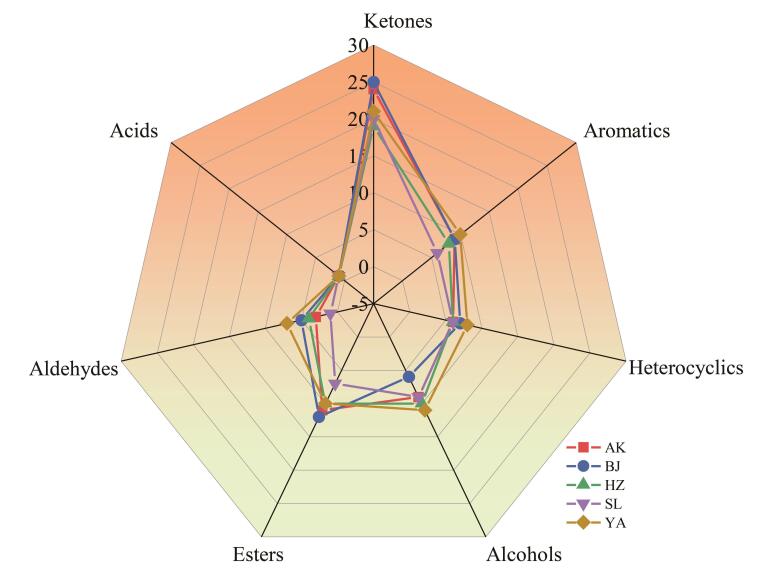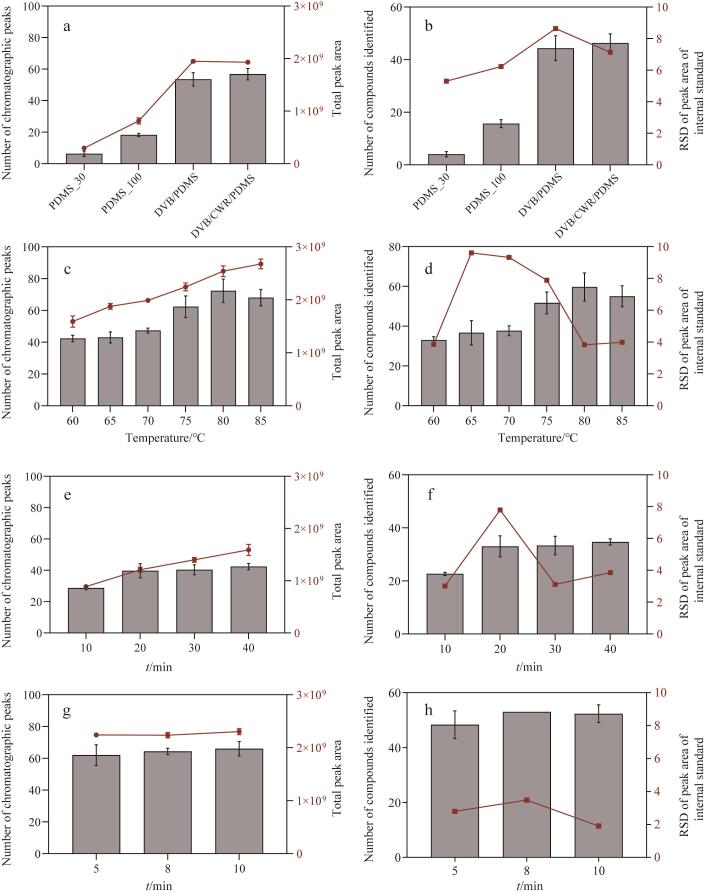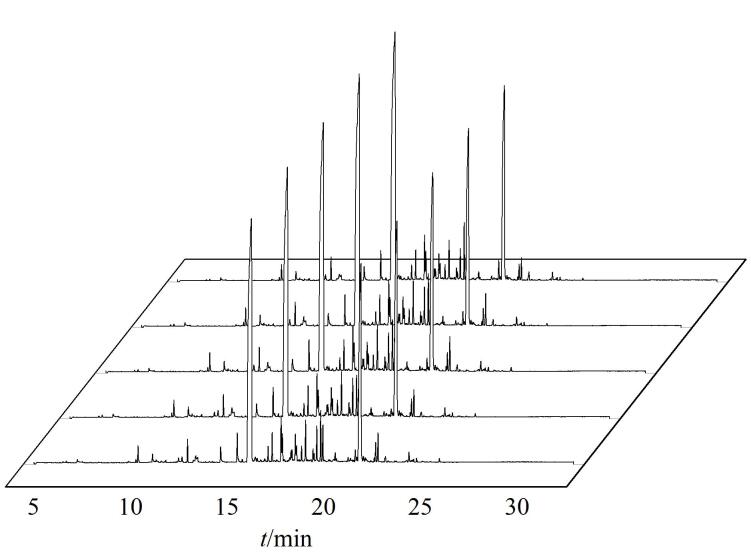[Analysis of volatile aroma components in tobacco by gas chromatography-mass spectrometry coupled with headspace solid phase microextraction].
Abstract
Volatile flavor compounds play vital roles when evaluating the flavor and quality of tobacco products. Pretreatment is always required owing to the wide range of flavor compounds and the complexity of the tobacco matrix. Solvent extraction (SE), steam distillation (SD), simultaneous distillation extraction (SDE), supercritical fluid extraction (SFE), and solid phase microextraction (SPME) are methods commonly used to extract and purify volatile flavor compounds. Among these methods, SPME coupled with headspace (HS) sampling has gained considerable attention in a variety of research fields because it combines sampling, extraction, concentration, and sample injection into a single procedure to deliver advantages that include convenient and simple sample preparation, small sample volumes, high sensitivities, and convenient operation.In this study, HS-SPME coupled with gas chromatography-mass spectrometry (GC-MS) was used to analyze the volatile aroma components in tobacco leaves. First, extraction efficiency was optimized by carefully evaluating multiple parameters, including types of solid phase microextraction fibers, extraction temperature, adsorption time, and desorption time. The number of chromatographic peaks, total chromatographic peak area, number of identified compounds, and internal-standard peak areas were used as indices. The optimized protocol involves incubating tobacco powder (1.0 g) under 80 ℃, extraction with an 80 μm divinylbenzene/carboxen/polydimethylsiloxane (DVB/CWR/PDMS) SPME needle for 30 min, followed by desorption from the fiber for a sufficient time (8 min). These conditions led to a 1.6% RSD for the internal-standard peak area across five replicate experiments; hence, the developed method is highly repeatable. The volatile aroma components in tobacco leaves obtained from five different production areas were analyzed using the optimized parameters. A total of 107 volatile aroma compounds were identified, among which ketones, aromatics, and heterocyclic compounds accounted for more than 70% of the total volatile aroma components (excluding neophytadiene). Tobacco leaves obtained from the Shangluo region contained the highest amount of total volatile aroma compounds, followed by leaves from Ankang, Hanzhong, Baoji, and Yan'an regions. Orthogonal partial least squares-discriminant analysis (OPLS-DA) was used to determine the main differential components from the various production regions, which identified 14 differential compounds (primarily ketones and alcohols). This study provides a theoretical basis and reference for further exploring key volatile flavor compounds in leaves sourced from different production areas, as well as for identifying flavor-indicator substances and improving the quality of tobacco leaves.




 求助内容:
求助内容: 应助结果提醒方式:
应助结果提醒方式:


